In today's competitive B2B landscape, cultivating strong customer relationships is more crucial than ever. One powerful tool for fostering loyalty and driving growth is a well-designed B2B reward program. These programs go beyond simple transactional incentives, offering unique value that resonates with business clients and partners.
This comprehensive guide explores innovative B2B reward program examples, providing actionable insights for companies looking to enhance their customer retention strategies. We'll delve into the key components of successful programs, highlight industry-leading examples, and offer practical tips for implementation.
Table of Contents
- Understanding B2B Reward Programs
- Key Components of Successful B2B Reward Programs
-
14 Innovative B2B Reward Program Examples
- IBM VIP Rewards
- Lenovo LEAP Program
- Celebrity Rewards by Celebrity Cruises
- Mailchimp & Co Membership Program
- HP Planet Partners Rewards Program
- Uptempo Advocate Program
- Quickbase Advocacy Program
- FlashIntel Advocate Program
- UserGems Advocate Program
- Bynder Customer Advocacy Program
- FactorsAI Advocate Program
- Sendoso SuperSender
- Webex Insider
- ServiceNow Advocacy
- Designing Your B2B Reward Program
- Measuring Success and ROI
- Common Challenges and How to Overcome Them
- The Future of B2B Reward Programs
- Conclusion
Understanding B2B Reward Programs
B2B reward programs are structured incentive systems designed to foster loyalty, encourage repeat business, and strengthen relationships with business clients, partners, or distributors. Unlike consumer-focused programs, B2B reward initiatives cater to the unique needs and motivations of business customers.
These programs often focus on providing value beyond simple discounts or points, offering benefits that can directly impact a client's business operations, knowledge, or bottom line. Successful B2B reward programs recognize the complexity of business relationships and the longer sales cycles typical in B2B transactions.
Key Components of Successful B2B Reward Programs
To create an effective B2B reward program, consider incorporating these essential elements:
-
Tiered Structure: Implement a tiered system that rewards higher-value clients with premium benefits, encouraging increased engagement and spend.
-
Personalization: Tailor rewards and experiences to match the specific needs and preferences of different client segments or individual businesses.
-
Educational Opportunities: Offer access to industry insights, training sessions, or exclusive content that helps clients improve their own business operations.
-
Experiential Rewards: Provide unique experiences, such as VIP event access or executive meet-and-greets, that go beyond traditional monetary incentives.
-
Business Enhancement Rewards: Offer rewards that directly contribute to a client's business growth, such as marketing support or business consultancy services.
-
Partner Benefits: Collaborate with other businesses to offer a wider range of valuable rewards, creating a more diverse and appealing program.
-
Gamification Elements: Incorporate challenges, leaderboards, or achievement badges to boost engagement and foster healthy competition among program members.
-
Flexibility: Allow members to choose how they earn and redeem rewards, catering to diverse business needs and preferences.
-
Technology Integration: Utilize advanced software solutions to streamline program management, data analysis, and personalization efforts.
-
Clear Communication: Ensure program benefits, rules, and progress are easily accessible and well-communicated to all participants.
14 Innovative B2B Reward Program Examples
Let's explore some standout B2B reward programs that exemplify best practices and innovative approaches:
IBM VIP Rewards
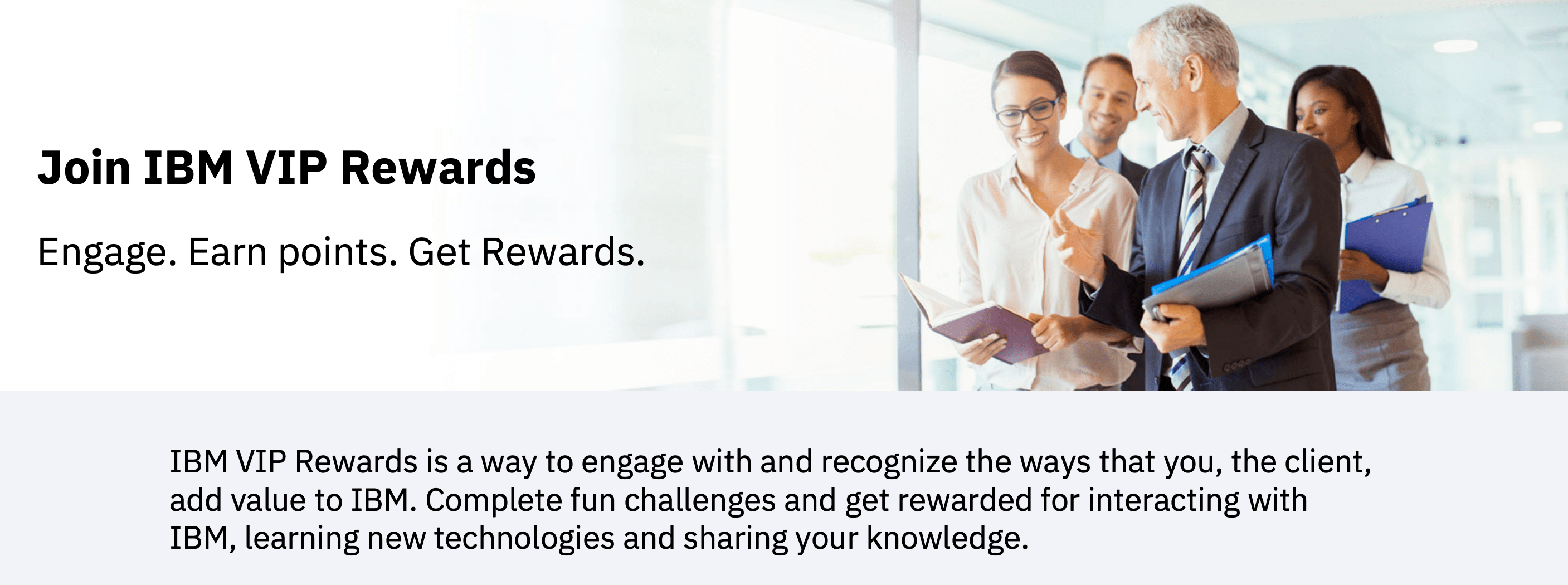
IBM's VIP Rewards program stands out as a prime example of how to engage and motivate B2B clients through a well-structured loyalty initiative. Key features include:
- Challenge-Based Point System: Members earn points by completing predefined actions, encouraging active engagement with IBM's products and services.
- Diverse Reward Options: Points can be redeemed for gift cards or, more uniquely, private sessions with IBM experts, providing tangible business value.
- Gamification Elements: A leaderboard based on challenge completion fosters friendly competition among program members.
- Educational Focus: Many challenges are designed to expand members' knowledge of IBM's offerings, serving both as a reward and a product education tool.
Why it works:
- Combines tangible rewards with high-value business insights
- Encourages continuous engagement through varied challenges
- Leverages gamification to drive participation and learning
Lenovo LEAP Program
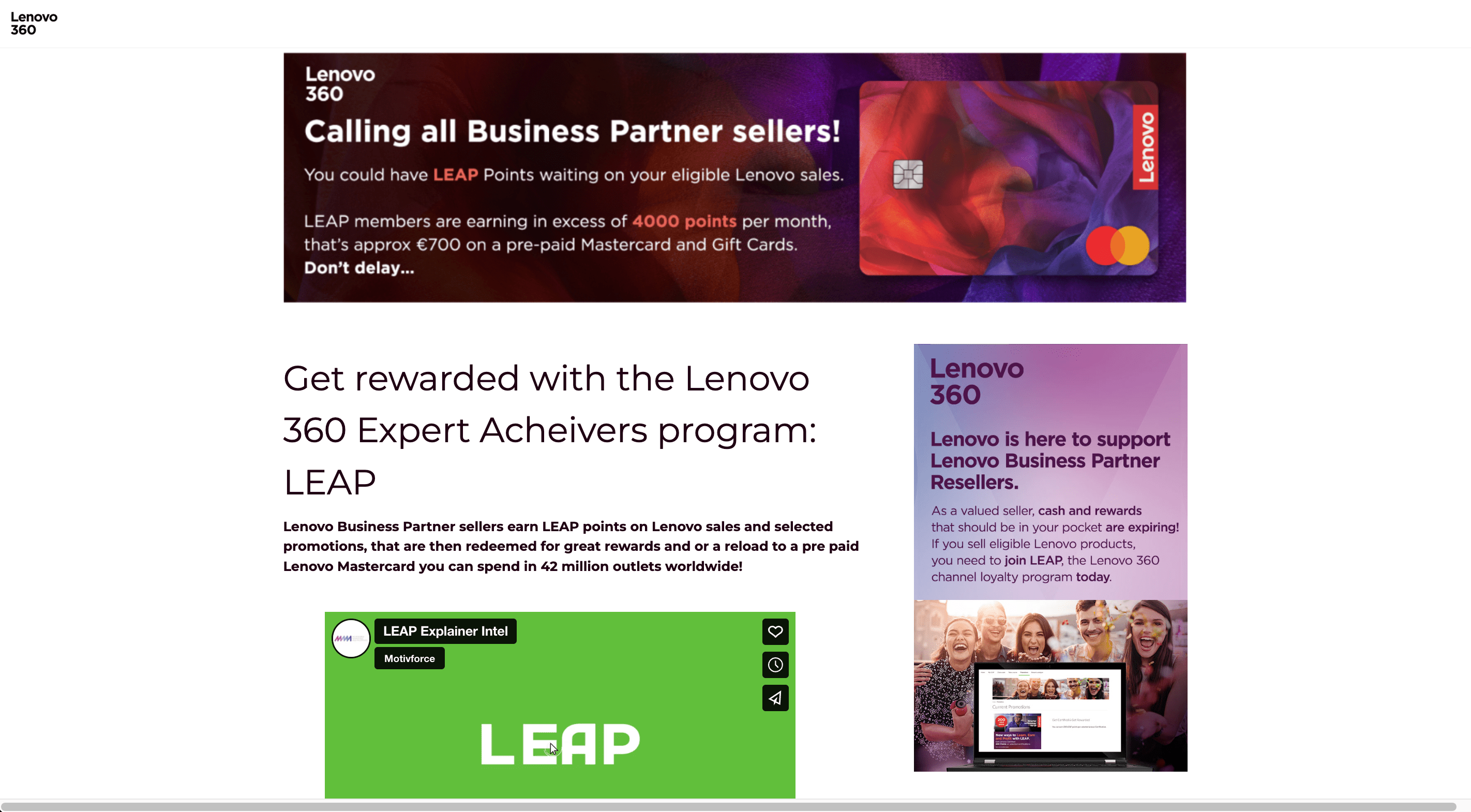
The Lenovo Expert Achievers Program (LEAP) offers a dual-pronged approach to partner engagement:
- Learn & Earn: Partners gain points for participating in educational sessions about Lenovo products.
- Sell & Earn: Additional points are awarded for selling Lenovo products.
- Flexible Redemption: Accumulated points can be exchanged for cash rewards via gift cards or a prepaid Mastercard.
Why it works:
- Incentivizes both product knowledge and sales performance
- Provides immediate monetary benefits to motivate partners
- Combines education with sales incentives for a holistic approach
Celebrity Rewards by Celebrity Cruises
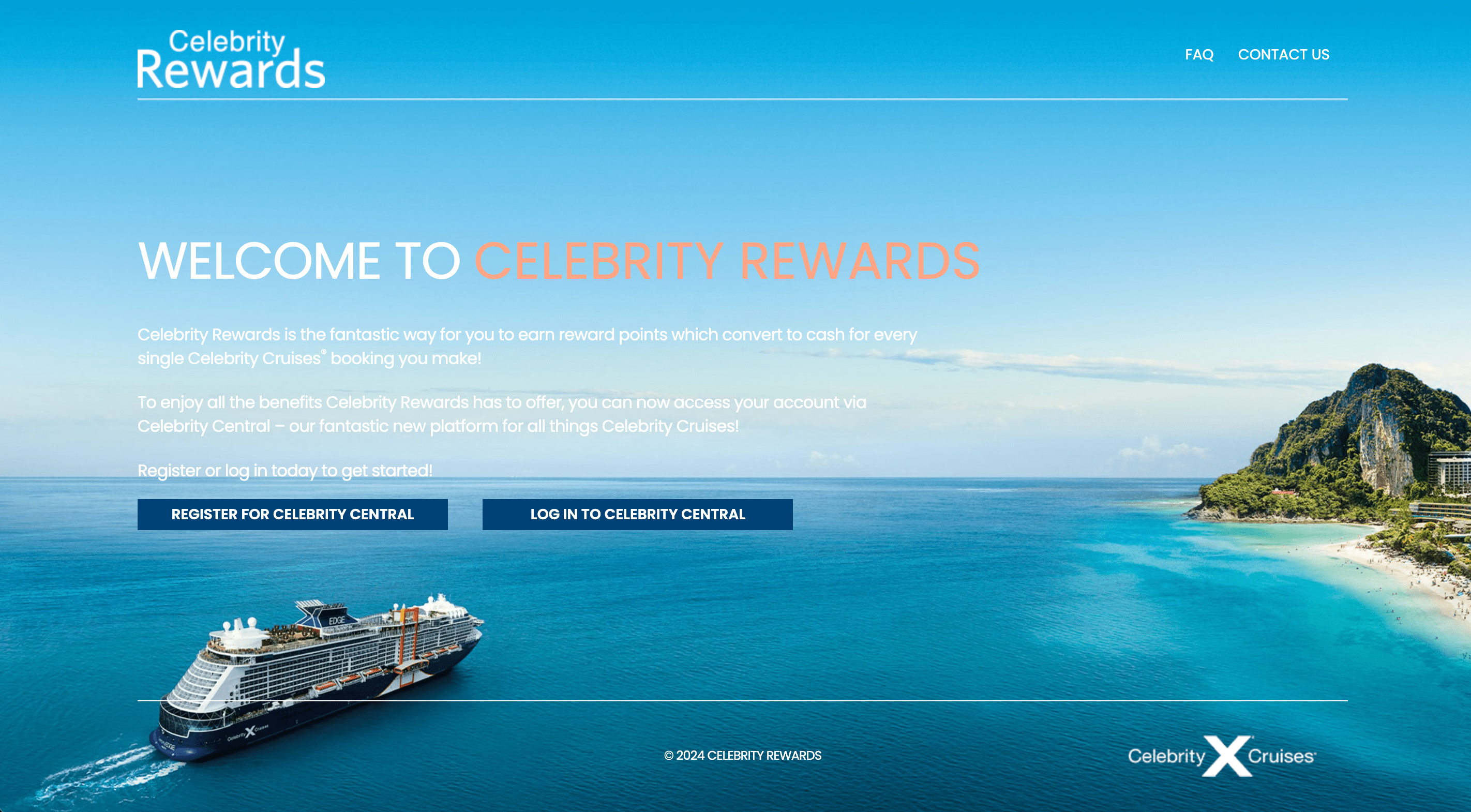
This travel industry program targets travel agencies to boost cruise bookings:
- Direct Point-to-Cash System: Agents earn 500 points for each cruise booked.
- Low Redemption Threshold: Points can be exchanged for cash after reaching just 2,500 points.
- Individual Agent Focus: Each booking agent has their own point balance, encouraging personal accountability.
Why it works:
- Simple, straightforward structure is easy for agents to understand and engage with
- Individual tracking promotes healthy competition within agencies
- Direct cash benefits provide strong motivation for bookings
Mailchimp & Co Membership Program

Mailchimp's program for marketing professionals and agencies offers:
- Exclusive Tools and Training: Members receive insider training and specialized tools for managing multiple clients.
- Tiered Benefits: Successful long-term members can be invited to become Mailchimp partners, unlocking additional perks.
- Priority Support: Partners gain access to 24/7 priority customer support.
- Early Access: Members get first looks at upcoming features and products.
Why it works:
- Rewards directly enhance members' professional capabilities
- Tiered structure encourages long-term engagement
- Exclusive benefits create a sense of insider status
HP Planet Partners Rewards Program
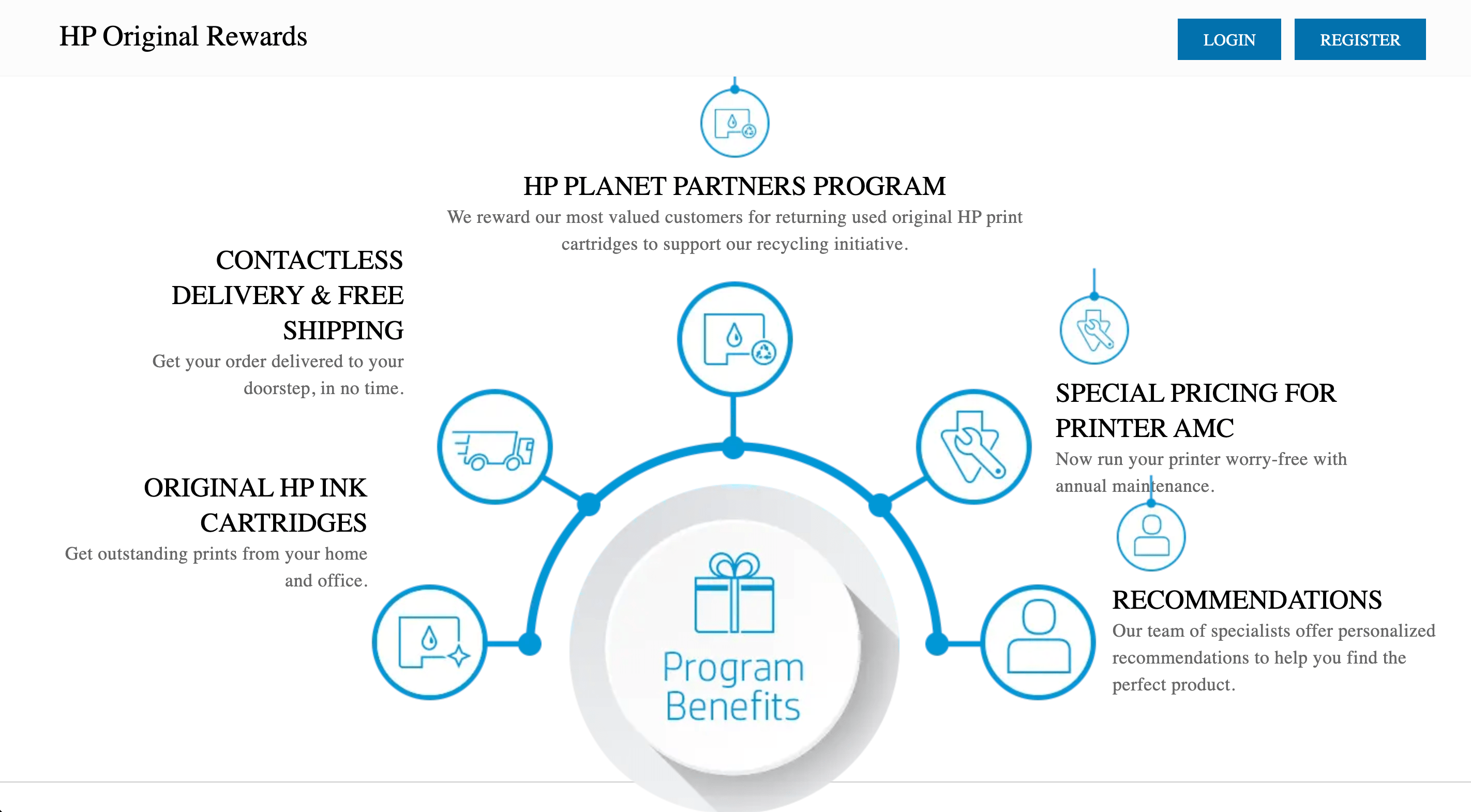
HP's program combines business incentives with corporate social responsibility:
- Recycling Rewards: Businesses earn points for returning used HP print cartridges.
- Environmental Impact: The program supports HP's recycling initiatives, appealing to environmentally conscious clients.
- Dual Benefits: Participants receive rewards while contributing to sustainability efforts.
Why it works:
- Aligns business incentives with environmental responsibility
- Provides a unique value proposition beyond traditional rewards
- Enhances HP's brand image as an environmentally conscious company
Uptempo Advocate Program
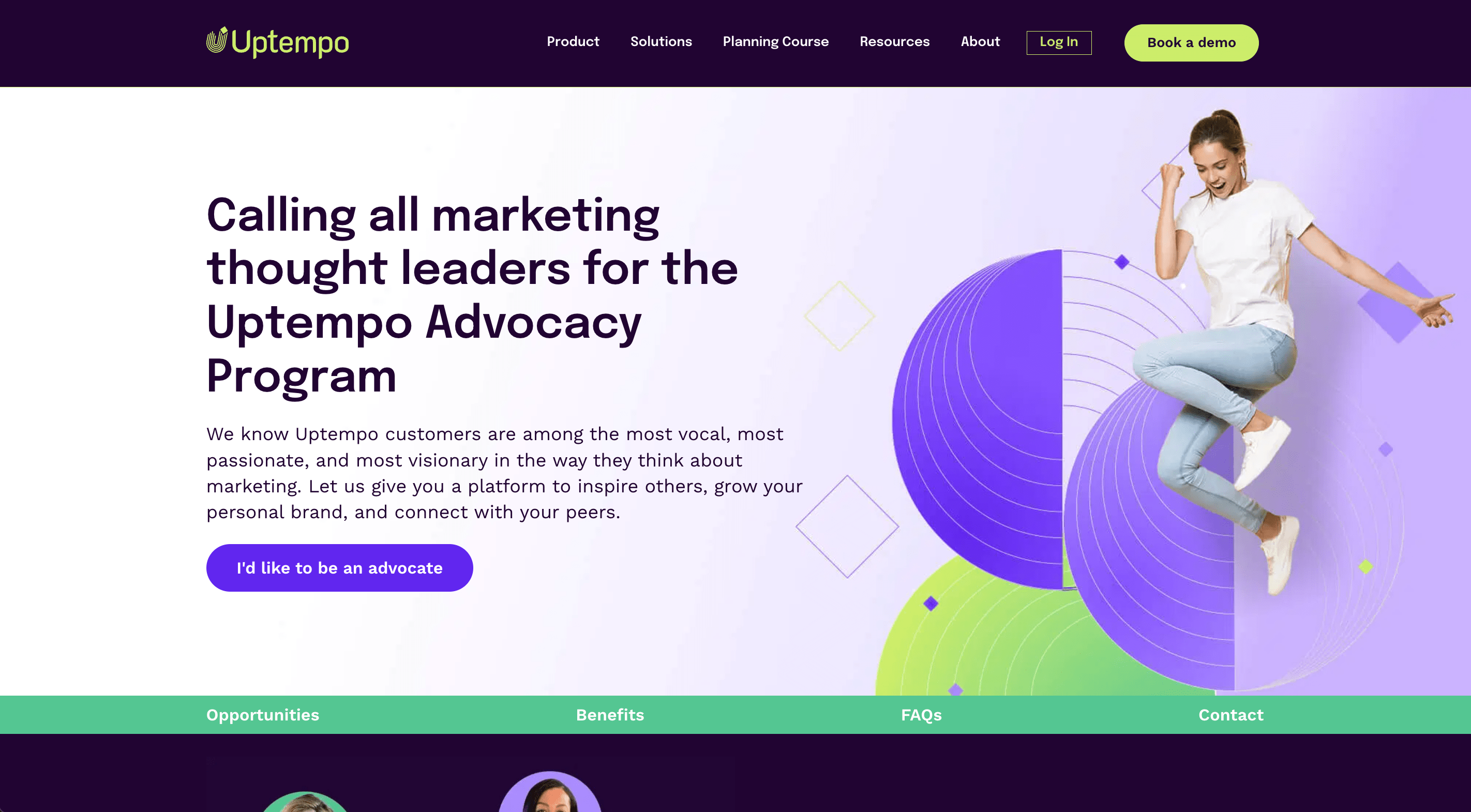
The Uptempo Advocate Program empowers its advocates with opportunities for:
- Task-Based Rewards: Earn points by participating in various advocate activities, from sharing content to providing testimonials.
- Exclusive Perks: Access premium resources and experiences that enhance your professional capabilities.
- Community Engagement: Connect with other advocates and learn from their successes.
Quickbase Advocacy Program
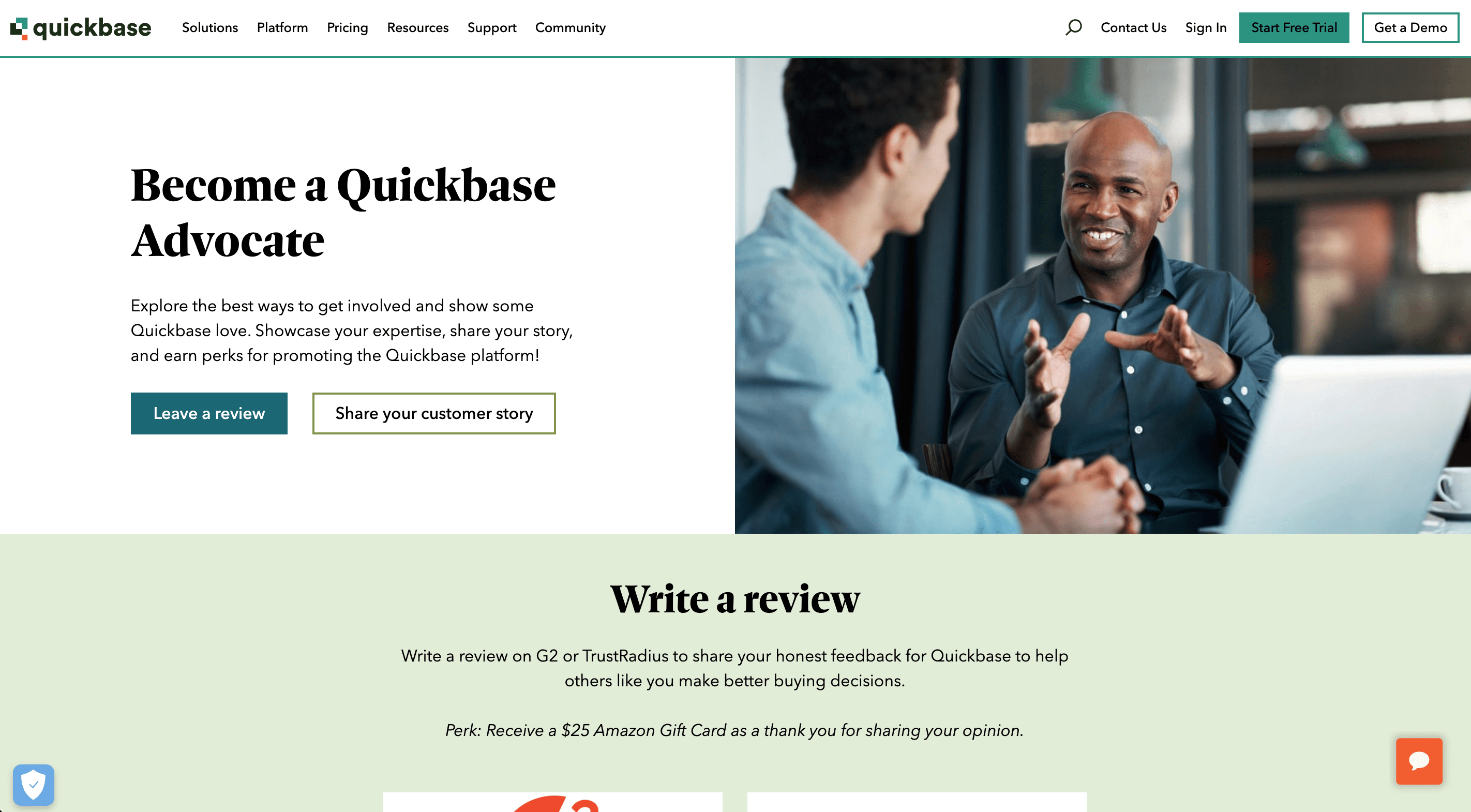
Quickbase's program is designed to harness the power of its community through:
- Rewarding Engagement: Points for contributing to forums, attending events, and sharing best practices.
- Recognition and Growth: Highlights top members in the community, offering them exclusive platforms for visibility.
- Incentives for Contributions: Digital badges, certificates, and other forms of recognition.
FlashIntel Advocate Program
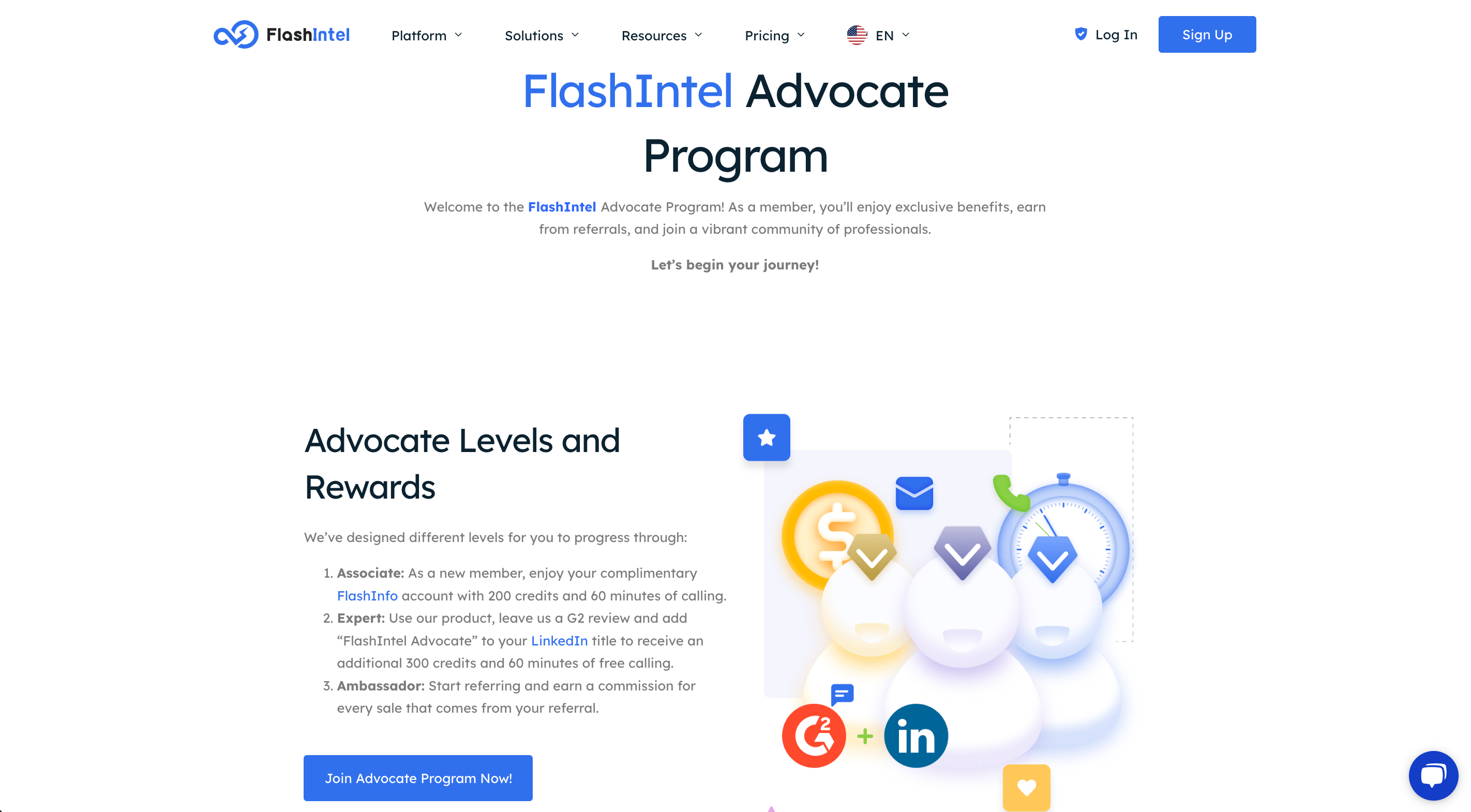
FlashIntel's Advocate Program focuses on fostering strong, mutually beneficial relationships through:
- Multi-Tier Engagement: Different levels of engagement from content sharing to providing in-depth case studies.
- Personalized Rewards: Tailor rewards to individual preferences and industry relevance.
- Continuous Learning: Regular training sessions and webinars to keep advocates informed about the latest updates.
UserGems Advocate Program
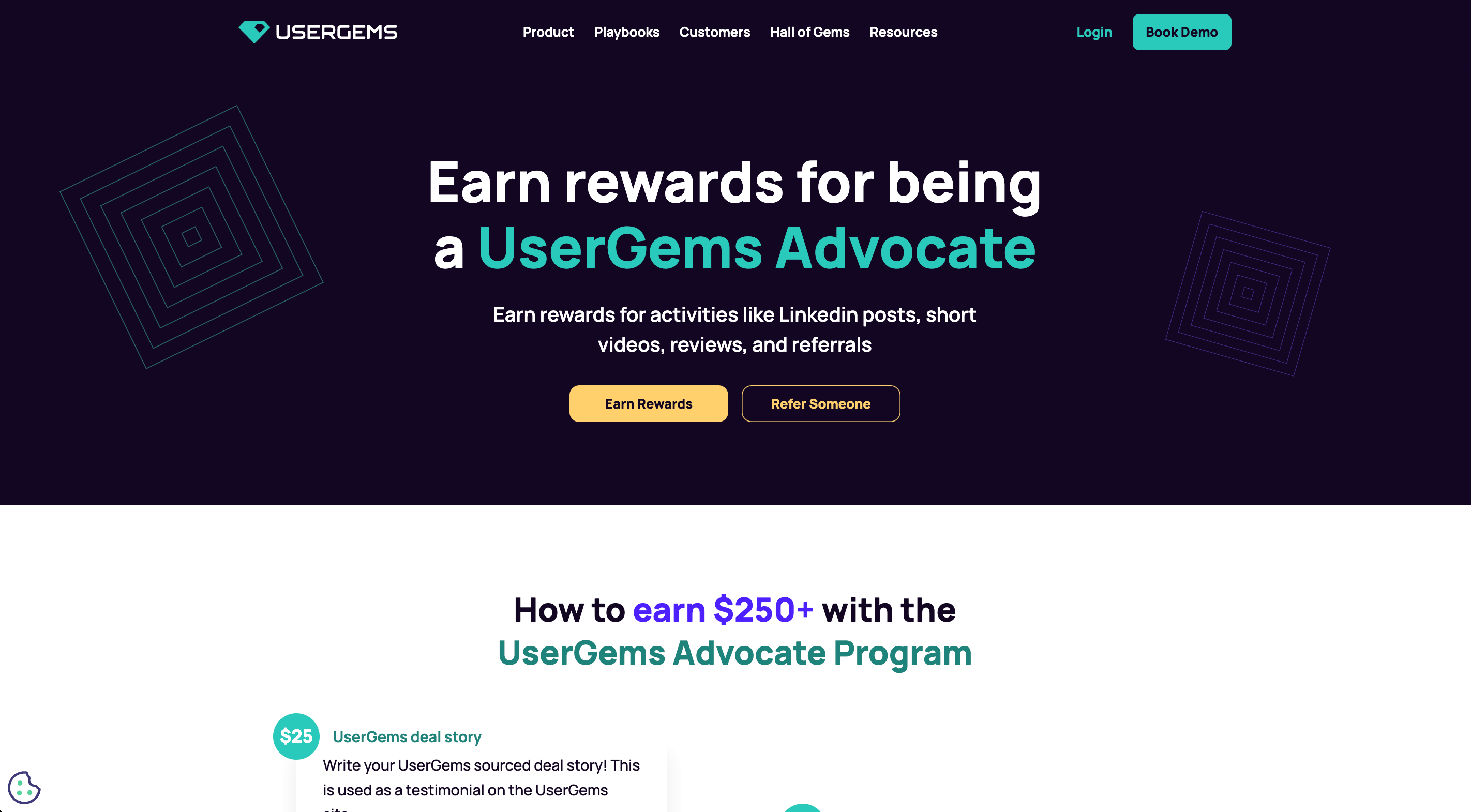
UserGems goes above and beyond with a program that offers:
- Content Creation Rewards: Incentives for writing articles, creating videos, and participating in webinars.
- Exclusive Networks: Access to high-level networking events and industry meetups.
- Shared Success: Highlighting both company and advocate achievements.
Bynder Customer Advocacy Program

The Bynder Customer Advocacy Program is tailored to make every voice count through:
- Feedback Incentives: Rewards for providing detailed product feedback and sharing experiences.
- Collaborative Development: Offer advocates opportunities to shape future product features and updates.
- Visibility and Recognition: Featuring top advocates in case studies and on the company website.
FactorsAI Advocate Program
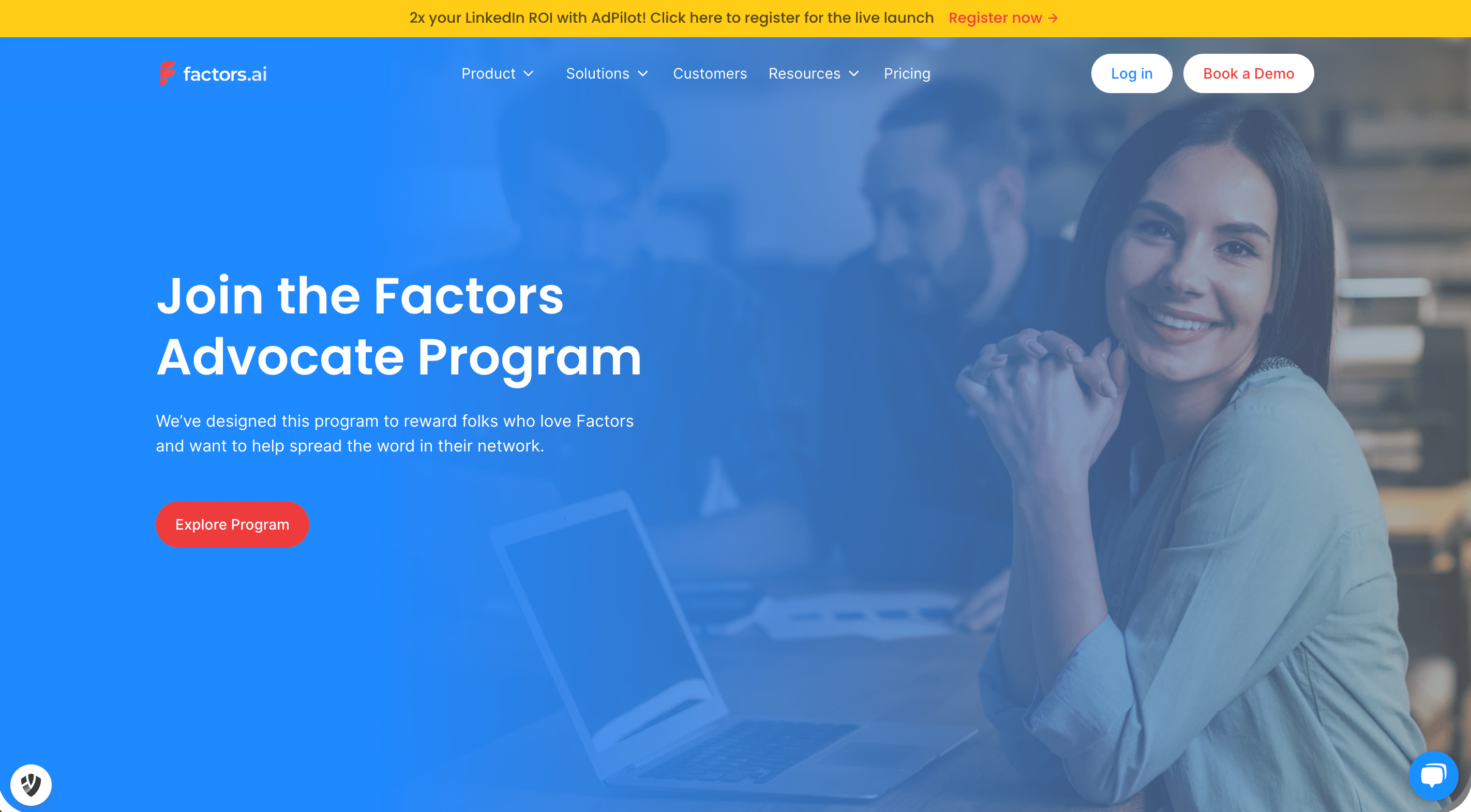
FactorsAI leverages a data-driven advocacy approach with:
- Insight Sharing: Advocates share their successes and strategies using FactorsAI's analytics tools.
- Performance-Based Rewards: Earn points based on the effectiveness of shared strategies and tools.
- Community Building: Regular meetups and brainstorming sessions among advocates.
Sendoso SuperSender
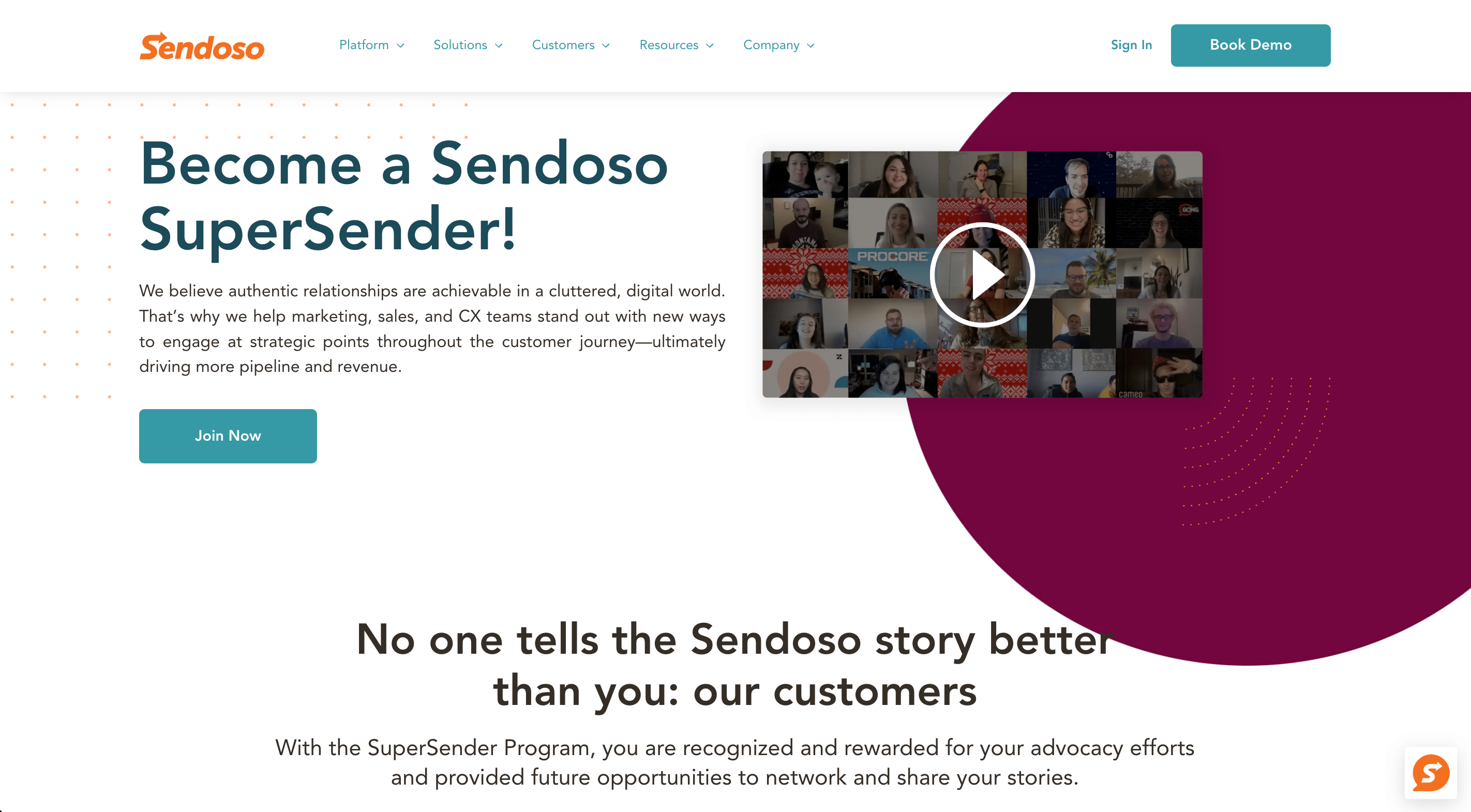
The Sendoso SuperSender program aims to nurture super users through:
- Exclusive Swag and Gifts: Regular mailings of exclusive swag items for top advocates.
- Priority Access: Early access to new features and product updates.
- Professional Development: Opportunities for advocates to attend industry events and webinars.
Webex Insider
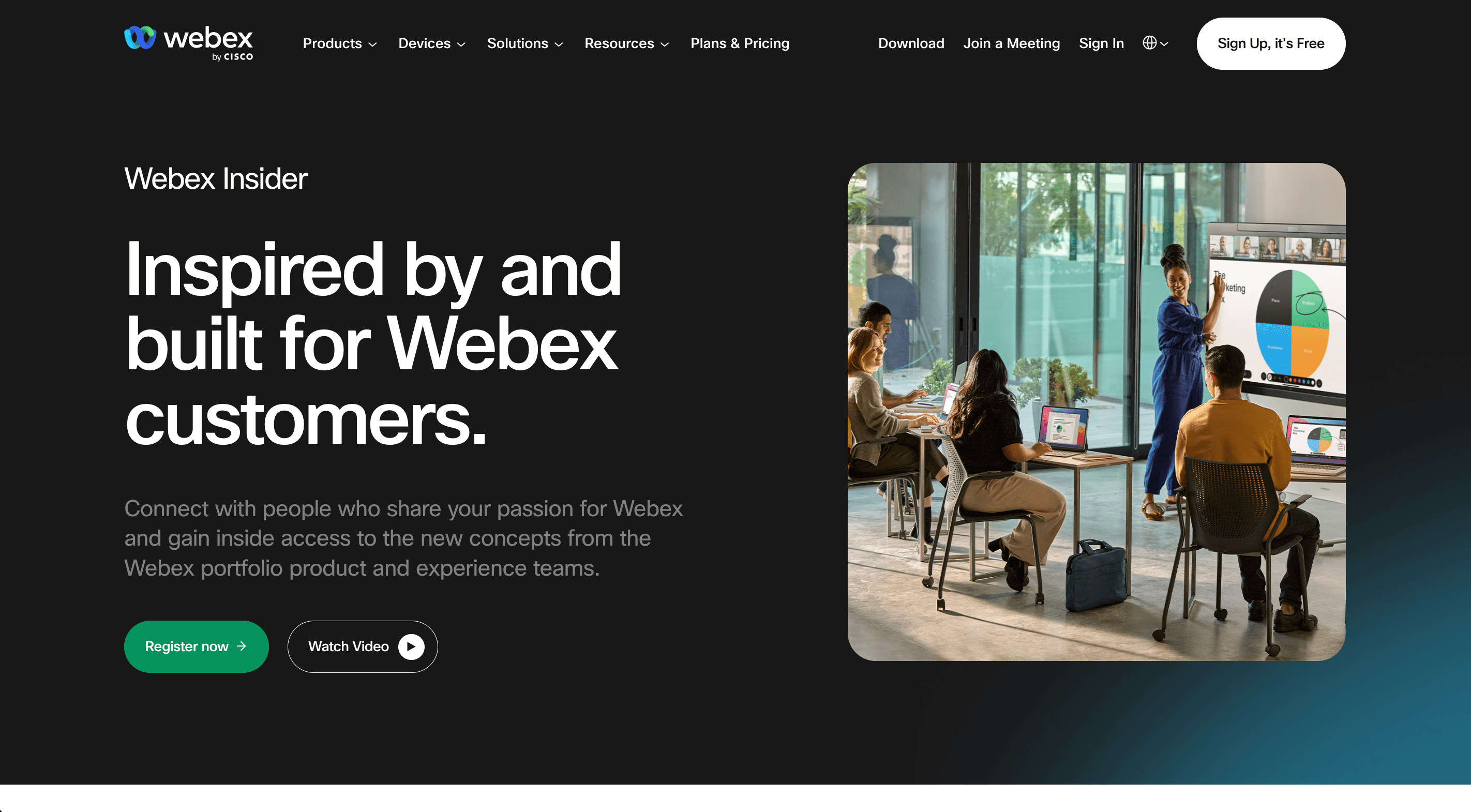
Webex offers a unique program through their Webex Insider, ensuring advocates have:
- Exclusive Training: Advanced training sessions featuring Webex's newest capabilities.
- Collaboration Opportunities: Advocates can collaborate directly with Webex product teams.
- Event Access: VIP access to Webex events and conferences.
ServiceNow Advocacy
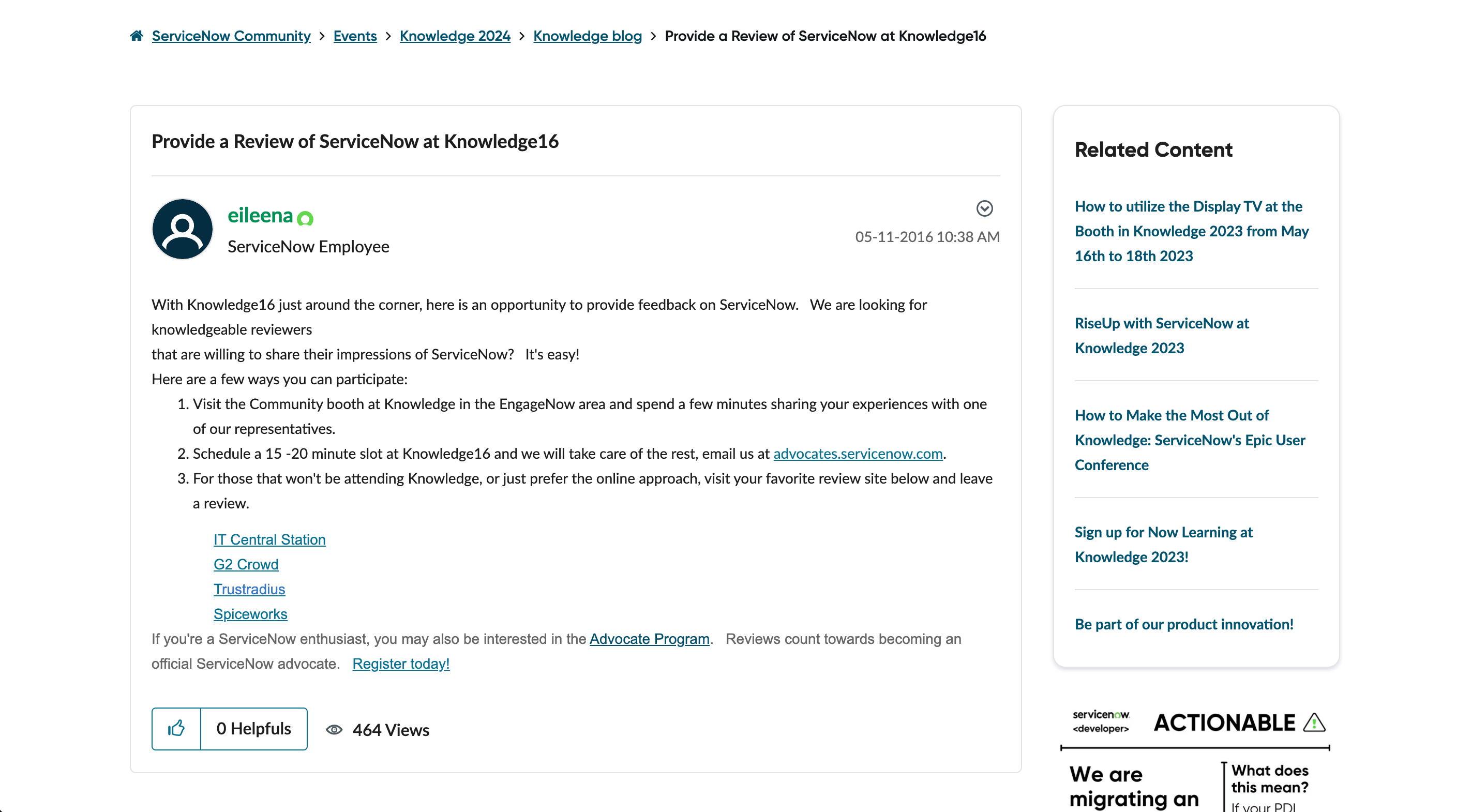
The ServiceNow Advocacy program is designed to leverage customer success stories, featuring:
- Spotlight on Reviews: Encourages customers to provide reviews and feedback on the ServiceNow platform.
- Engagement Rewards: Rewards for active participation in forums and community contributions.
- Industry Recognition: Highlights customer success stories in industry publications and ServiceNow events.
Designing Your B2B Reward Program
When creating a B2B reward program, consider these strategic steps:
-
Define Clear Objectives: Establish specific goals for your program, such as increasing customer retention, boosting sales of particular products, or enhancing brand loyalty.
-
Know Your Audience: Conduct thorough research to understand your B2B clients' needs, preferences, and pain points. This insight will guide your reward selection and program structure.
-
Choose the Right Program Type: Based on your objectives and audience, decide whether a points-based system, tiered structure, or perks program best suits your needs.
-
Select Meaningful Rewards: Offer incentives that provide real value to your B2B clients. This could include business tools, industry event access, or customized training sessions.
-
Implement User-Friendly Technology: Invest in a robust platform that makes it easy for clients to track their progress, redeem rewards, and engage with your program.
-
Create a Communication Strategy: Develop a plan to regularly inform participants about program updates, their status, and available rewards.
-
Train Your Team: Ensure your sales and customer service teams are well-versed in the program details and can effectively promote its benefits.
-
Plan for Scalability: Design your program with future growth in mind, allowing for easy additions or modifications as your business evolves.
Measuring Success and ROI
To ensure your B2B reward program is delivering value, track these key performance indicators (KPIs):
- Customer Retention Rate: Monitor how the program impacts client loyalty over time.
- Average Order Value: Measure any increases in transaction sizes among program participants.
- Engagement Metrics: Track how often clients interact with the program, redeem rewards, or participate in offered activities.
- Net Promoter Score (NPS): Gauge how likely participants are to recommend your business to others.
- Revenue Growth: Analyze the program's impact on overall sales and revenue from participating clients.
- Cost of Customer Acquisition: Determine if the program helps reduce the expenses associated with acquiring new clients.
| KPI | Description | Calculation Method |
|---|---|---|
| Customer Retention Rate | Percentage of customers retained over a specific period | (Customers at End of Period - New Customers Acquired) / Customers at Start of Period x 100 |
| Average Order Value | Average amount spent per transaction | Total Revenue / Number of Orders |
| Engagement Rate | Percentage of active program participants | Active Participants / Total Enrolled Participants x 100 |
| Net Promoter Score | Measure of customer loyalty and satisfaction | % Promoters - % Detractors |
| Revenue Growth | Increase in revenue attributed to the program | (Current Period Revenue - Previous Period Revenue) / Previous Period Revenue x 100 |
| Cost of Customer Acquisition | Average cost to acquire a new customer | Total Marketing and Sales Costs / Number of New Customers Acquired |
Regularly review these metrics and be prepared to adjust your program based on the insights gained.
Common Challenges and How to Overcome Them
While B2B reward programs offer significant benefits, they also come with unique challenges. Here are some common issues and strategies to address them:
-
Low Engagement:
- Solution: Regularly communicate program benefits, simplify the earning and redemption process, and offer more relevant rewards.
-
Complexity in Management:
- Solution: Invest in advanced loyalty management software to automate processes and provide real-time data analytics.
-
Difficulty in Demonstrating ROI:
- Solution: Establish clear KPIs from the outset and use robust tracking tools to measure program performance against business objectives.
-
Reward Relevance:
- Solution: Conduct regular surveys and feedback sessions with participants to ensure rewards remain valuable and aligned with their needs.
-
Scalability Issues:
- Solution: Design the program with flexibility in mind, allowing for easy adjustments as your business and client base grow.
-
Data Privacy Concerns:
- Solution: Implement strong data protection measures and be transparent about how client information is collected and used.
-
Lack of Personalization:
- Solution: Utilize AI and machine learning technologies to analyze participant data and deliver more tailored experiences and rewards.
The Future of B2B Reward Programs
As technology advances and business landscapes evolve, B2B reward programs are set to become even more sophisticated and integral to customer retention strategies. Here are some trends to watch:
-
AI-Driven Personalization: Artificial intelligence will enable hyper-personalized reward offerings based on individual client behaviors and preferences.
-
Blockchain Integration: Blockchain technology could revolutionize reward point management, offering increased security and transparency.
-
Sustainability Focus: More programs will incorporate eco-friendly rewards and initiatives, appealing to the growing corporate emphasis on sustainability.
-
Cross-Industry Collaborations: B2B reward programs may increasingly partner across sectors to offer a wider range of valuable incentives.
-
Virtual and Augmented Reality Experiences: As technology advances, unique VR or AR experiences could become premium reward options.
-
Real-Time Redemption: Instant gratification through immediate reward redemption will become more prevalent, enhancing user experience.
Conclusion
B2B reward programs represent a powerful tool for fostering customer loyalty, driving engagement, and ultimately boosting business growth. By understanding the unique needs of B2B clients and implementing innovative strategies, companies can create reward programs that deliver tangible value to both participants and the business itself.
The examples and insights provided in this guide offer a starting point for developing or enhancing your B2B reward program. Remember, the most successful programs are those that evolve with their participants' needs and consistently align with overarching business objectives.
As you embark on your B2B reward program journey, focus on creating meaningful experiences, leveraging technology for personalization and efficiency, and consistently measuring your program's impact. With the right approach, your B2B reward program can become a cornerstone of your customer retention strategy and a significant driver of long-term business success.






